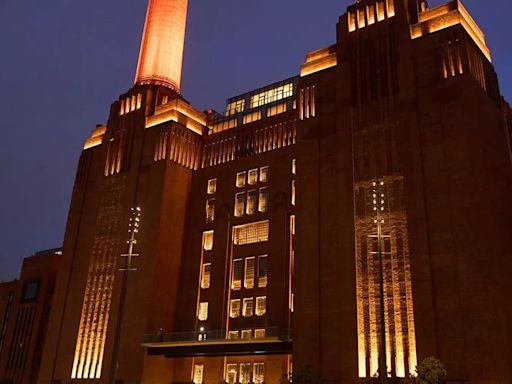Search results
Jun 28, 2022 · In Wales, the population grew by 1.4% or 44,000 people. In Bury, the population size has increased by 4.7%, from around 185,100 in 2011 to 193,800 in 2021. This is lower than the overall increase for England (6.6%), where the population grew by nearly 3.5 million to 56,489,800. Nearby areas like Salford and Manchester have seen their ...
- How life has changed in Bury: Census 2021
The increase in the percentage of people who did not...
- How life has changed in Bury: Census 2021
View Census 2021 data tables for Bury on Nomis, an ONS service (external). Subnational indicators Find out how Bury compares on indicators such as weekly pay and healthy life expectancy.
- Current Population Statistics
- Population Growth
- Demographics of Bury - Age Groups
- Demographics of Bury - Gender
- 2021 Census - Bury
- 2011 Census Data - Resident Population of Bury
- 2011 Census Data - Ethnic Groups in Bury
- 2011 Census Data - Religion in Bury
- 2011 Census Data - Resident Population of Bury - Country of Birth
- Location and Transport
According to data from the UK's Office for National Statistics (ONS), the current population of Bury is 194,600. As of May 1 2024, the latest ONS statistics are for 2022. The table below details population statistics for Bury over the past few years, split by age group.
As can be seen from the data in the table above, the population of Bury increased from 187,100 in 2013 to 194,600 in 2022. This represents a population growth rate of 4.01%.
In 2013, 37,800 children lived in Bury; 20.20% of the total population. In 2022, 39,000 children lived there, which was 20.04% of the total population. The percentage of children living in Bury in recent years has been falling. In 2013, 117,500 adults lived in Bury, representing 62.80% of the total population. In 2022, 119,900 adults lived there, r...
There are currently more females than males in Bury. 95,700 males were living there in 2022 (49.18% of the total). 98,900 females were living there in 2022 (50.82% of the total). Population statistics by gender for Bury between 2013 and 2022 are shown in the table below.
The census is a one-time snapshot of the United Kingdom that provides extensive demographic and social data. In the United Kingdom, there is a census every 10 years. They are currently run in England and Wales by the Office for National Statistics (ONS), in Northern Ireland by the Northern Ireland Statistics and Research Agency (NIRSA), and in Scot...
As of today, the most recent published UK Census data was for 2011. Results of the 2011 United Kingdom Census showed that the total population of Bury was 185,060. The number of males living in Bury was 90,588 (48.95% of the total resident population). The number of females was 94,472 (51.05% of the total resident population).
Whites were the largest ethnic group in Bury. 165,032 (89.18%) of the total population of 185,060 identified as white. Bury has a higher percentage white population than the average for England (85.42%). Asians were the second-largest ethnic group in Bury. 13,407 (7.24%) of the population identified as Asian. Bury has a lower percentage Asian popul...
Christians were the largest religious group in Bury. 116,036 (62.70%) of the total population of 185,060 identified as Christian. Bury has a higher percentage Christian population than the average for England (59.38%). Muslims were the second-largest religious group in Bury. 11,279 (6.09%) of the population identified as Muslim. Bury has a higher p...
168,945 (91.29%) of the 185,060 residents of Bury were born in the UK; 164,590 in England, 2,296 in Scotland, 1,073 in Wales, and 979 in Northern Ireland. 1,801 (0.97%) were born in the Republic of Ireland, 3,898 (2.11%) in other EU countries, and 10,416 (5.63%) in other countries.
Bury town centre is located 8 miles north of Manchester city centre. The metropolitan borough is bounded by Rochdale to the east, Manchester and Salford to the south, Bolton to the west, Rossendale to the north, and Blackburn with Darwen to the northwest. A Metrolink line links Bury town centre to Manchester city centre. It runs from Bury Metrolink...
In 1971 34,980 people living in Bury were employed in manufacturing. By 2001 this had fallen to 13,690 – a decrease of 61%. During the same period the numbers of people employed in service industries increased from 34,200 to 54,227, a gain of 58.5%. Politics and services. Between 1974 and 1986, the Conservative Party controlled the council.
Population. The unrounded population estimates by single year of age show that there are 193,855 people living in Bury in 2021. The full breakdown of the population by age and gender shows that the most common age of people living in Bury is 56. It also shows that there are 1,445 people aged 90 and over, an increase from 1,228 in 2011.
Jun 28, 2022 · The Office for National Statistics (ONS) has said the population of England and Wales has increased by more than 3.5m in the 10 years leading up to the 2021 census with a total of 59,597,300 people. Unsurprisingly, Bury and the North West’s populations have increased. But Bury’s population has risen by 4.7 per cent from around 185,100 in ...
People also ask
How many people live in Bury & Wales?
What are the population statistics for Bury?
Does bury have a higher population than England?
How many Bury residents are born in England?


